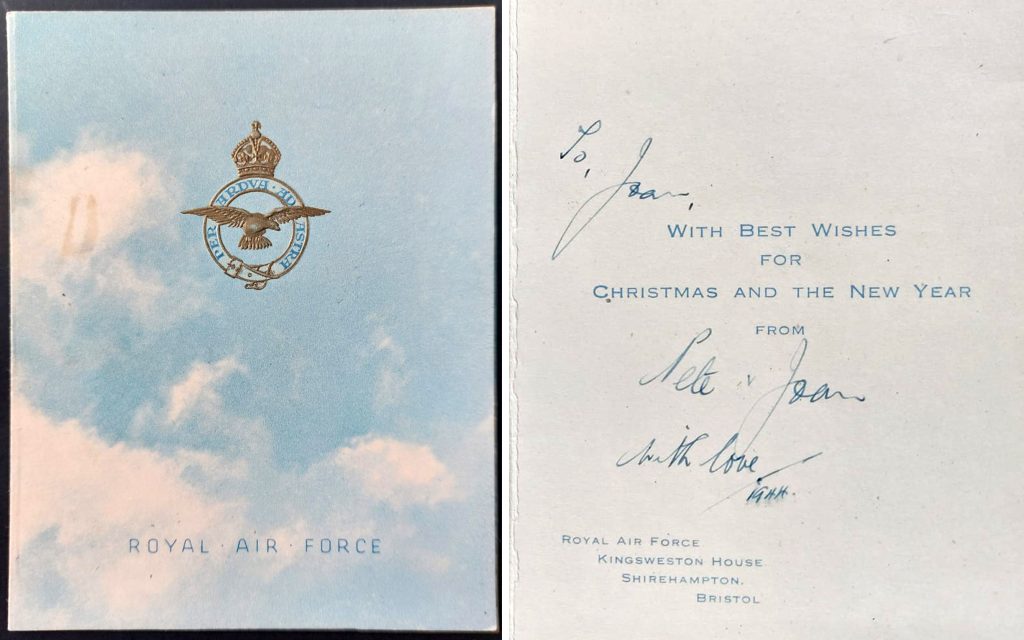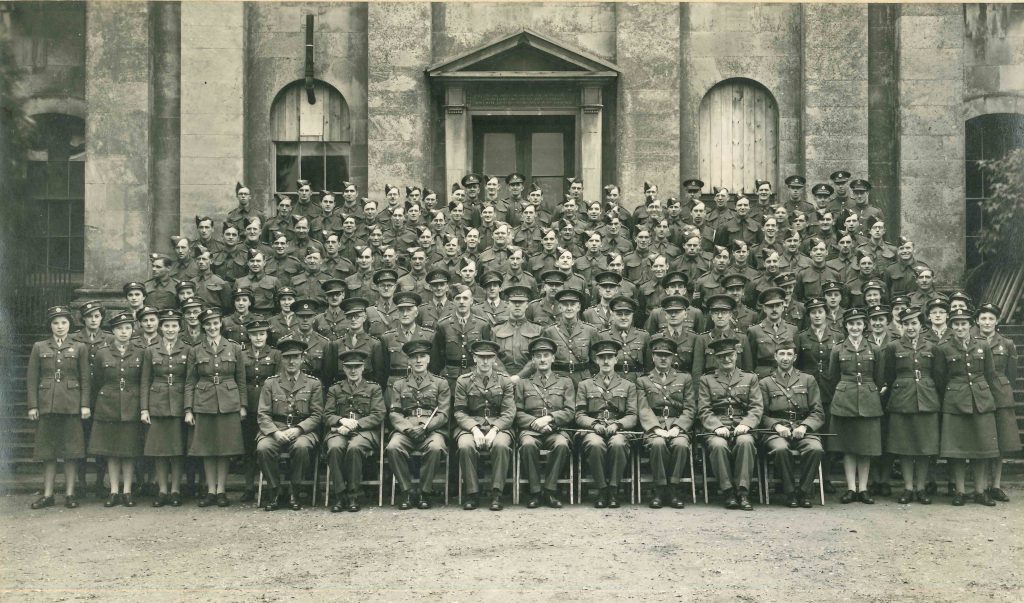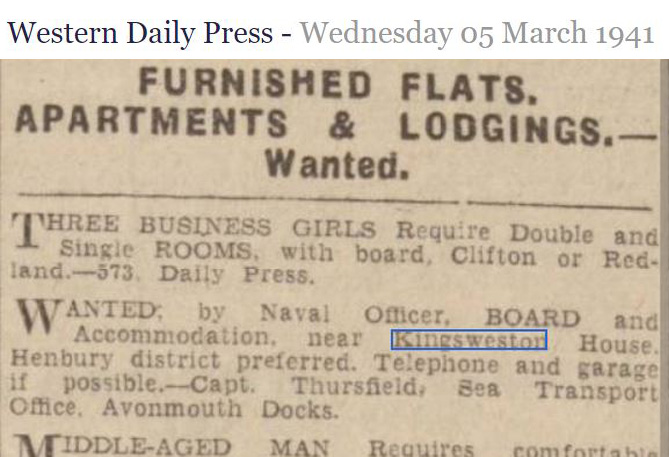During WWII Kings Weston house was requisitioned from the trustees of Bristol Municipal Charities by the Government. It’s been difficult to establish exactly what was happening at this time, both in the parkland and particularly in the mansion itself. With the obvious need for secrecy at the time there are scant records of what was going on. The concrete bases of Nissan huts along the South Walk remain the most tangible reminder of wartime use, but occasionally things turn up that add more to our knowledge; Such a new addition appeared just recently.

A Christmas Card, of all things, now established the RAF at Kings Weston. An odd thing to find during wartime privations, the card includes the embossed crest and motto, “”through adversity to the stars”, on the front with stylised blue sky and clouds as a background. The inside includes the printed address of the RAF and Kingsweston House, Shirehampton and helpfully the date 1944, towards the end of the war.
Whilst a lovely find, this adds further confusion to how the house was being used. We’ve already found evidence of Navy officers and the army working here, but this adds another service! If anyone can shed light on what was happening here we would welcome it.






